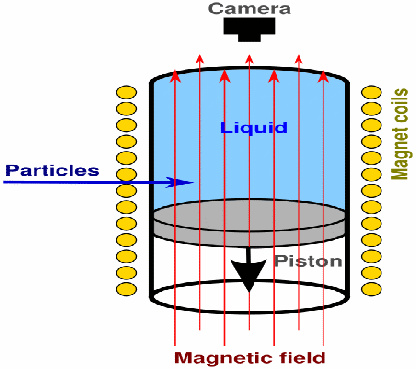A bubble chamber is a vessel filled with a superheated transparent liquid (most often liquid hydrogen) used to detect electrically charged particles moving through it.
Bubble chambers work on the same principle as bubble chambers, the difference being they are based on supersaturated liquid rather than superheated vapour. They have now mostly been supplanted by wire chambers and spark chambers.
They are made by filling a large cylinder with a liquid heated to just below its boiling point. As particles enter the chamber, a piston suddenly decreases its pressure, and the liquid enters into a superheated, metastable phase. Charged particles create ionisation tracks, around which the liquid vaporises, forming microscopic bubbles, with density proportional to the rate of energy loss of the particle.
Bubbles grow in size as the chamber expands, until they are large enough to be seen or photographed. Several cameras are mounted around it, allowing a three-dimensional image of an event to be captured. Bubble chambers with resolutions down to a few μm have been operated.

The entire chamber is subject to a constant magnetic field, which causes charged particles to travel in helical paths whose radius is determined by their charge-to-mass ratios and their velocities. Since the magnitude of the charge of all known charged, long-lived subatomic particles is the same as that of an electron, their radius of curvature must be proportional to their momentum. Thus, by measuring their radius of curvature, their momentum can be determined.
